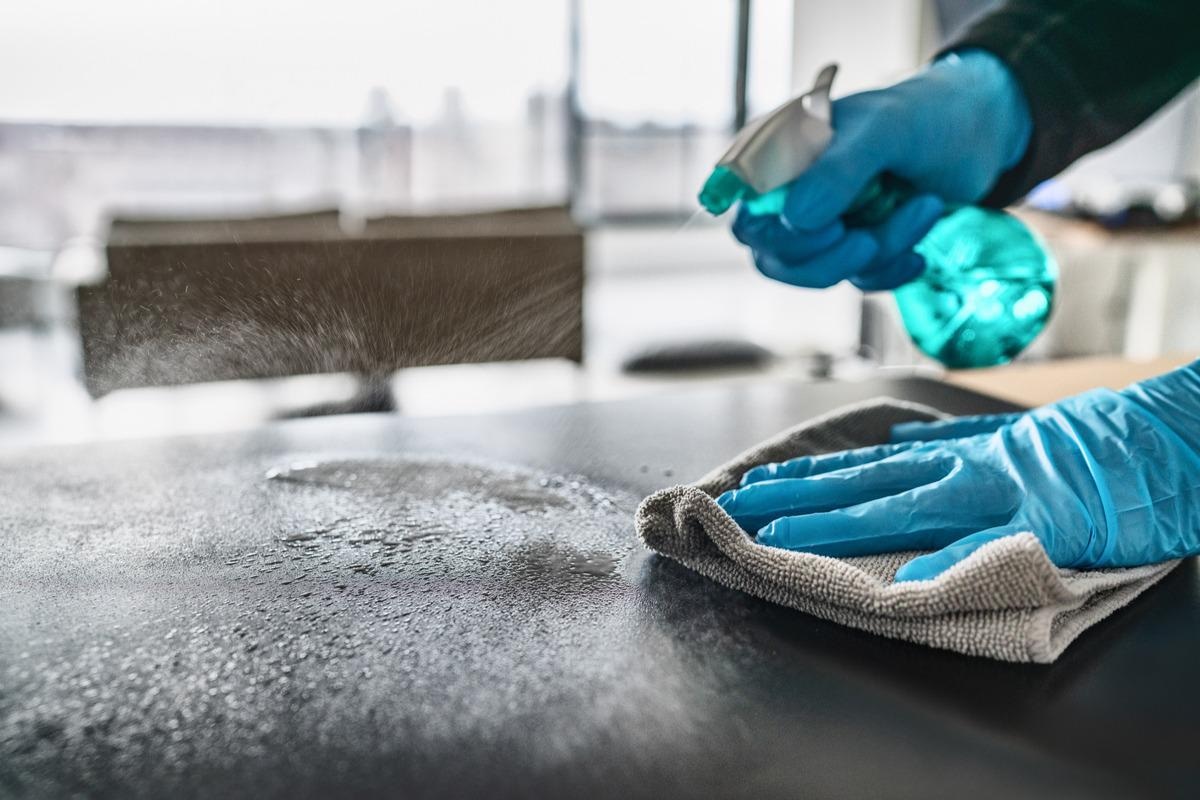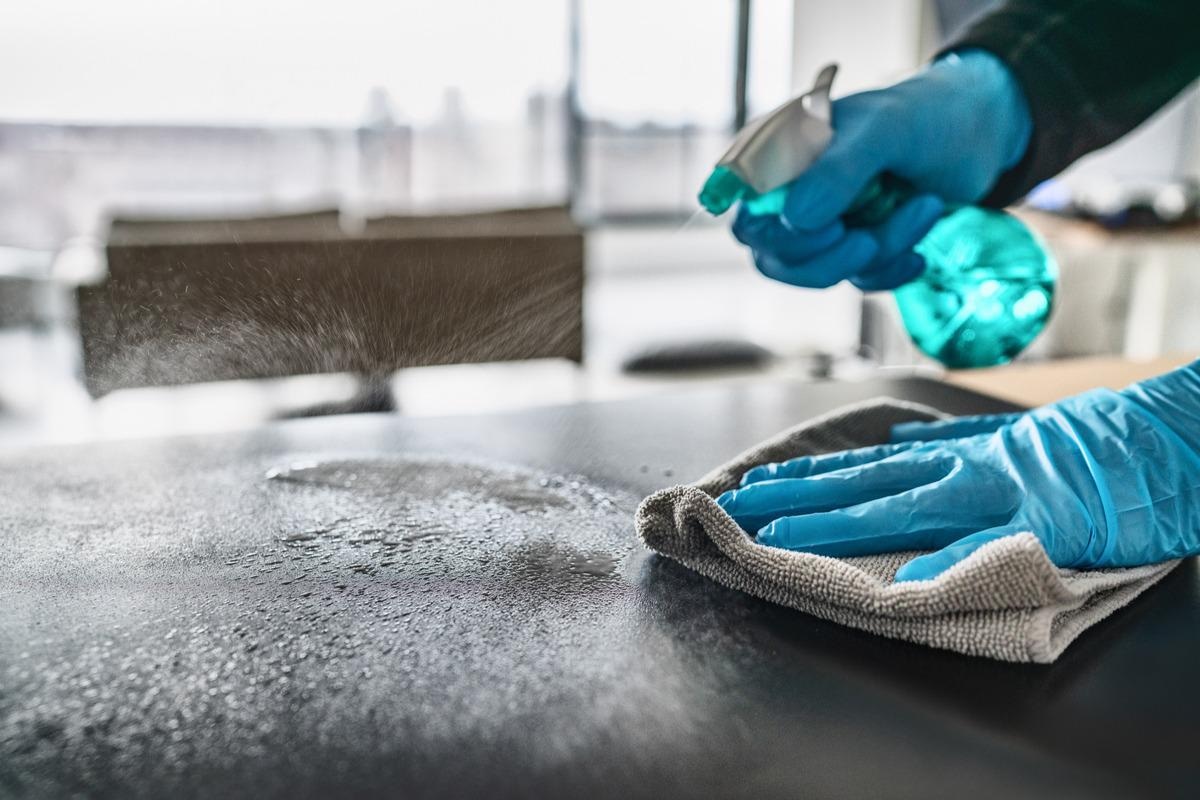In a recent study posted to the bioRxiv* preprint server, researchers showed that the severe acute respiratory syndrome coronavirus 2 (SARS-CoV-2) Omicron variant of concern (VOC) is more stable on smooth and porous surfaces compared to its five ancestral strains.

A recent study revealed that the Omicron spike (S) protein is more stable than that of the ancestral strain; perhaps this raises the possibility that the Omicron VOC is more stable on different surfaces.
About the study
In the current study, researchers tested the stabilities of ancestral SARS-CoV-2 and Omicron VOC (BA.1) on different surfaces with a dimension of 1×1 cm2. They treated surfaces with a 5 µl droplet of each virus (10^7 half-maximal inhibitory concentration (TCID50)/ml), then incubated at room temperature (21-22°C) for different time points, and finally, saturated in viral transport medium for 30 minutes to recover residual infectious virus. The researchers used TCID50 assays to test the infectivity of the recovered infectious virus in Vero-E6 cells.
Study findings
On all the examined surfaces, the Omicron BA.1 variant was more stable than the ancestral SARS-CoV-2. After two days of incubation, the infectious titers of ancestral SARS-CoV-2, recovered on stainless steel, polypropylene sheet, and glass, were reduced by 99.91%, 99.86%, and 99.9%, respectively. After four days of incubation, infectious ancestral SARS-CoV-2 could be recovered from only one of the three treated glass samples.
In striking contrast, infectious Omicron could be recovered from these surfaces up to seven days after incubation; however, the observed reduction in their TCID50 titers was 98.19%, 99.65%, and 98.83% on treated stainless steel, polypropylene sheet, and glass surfaces, respectively. Notably, the infectious titers of the Omicron variant were not reduced by 3 log10 units on any of the examined surfaces by the end of the study period.
The stability of Omicron was also higher on porous surfaces, such as facial tissue and printing paper. On a tissue, viable ancestral SARS-CoV-2 could not be recovered after 30 minutes of incubation.
Contrastingly, viable Omicron could be recovered after a 30-minute incubation, and the reduction in its titer was less than 3 log10 units, i.e., 99.34%.
On printing paper, the titer of ancestral SARS-CoV-2 reduced by 99.68% in five minutes, and no infectious virus could be detected after 15-minutes of incubation. Omicron was more stable, with infectious virus recoverable from two out of three duplicates after 30-minutes of incubation.
Conclusions
Together, the study data indicated that Omicron was more stable on different surfaces and materials than the ancestral SARS-CoV-2 strain. It is, thus, apparent that it is more likely to disseminate via the fomite route.
The authors based their recommendations on the findings of a recent study that revealed an infectious dose of 10 TCID50 units could infect more than 50% of test subjects, and the current study showed high Omicron infectivity on all surfaces. They strongly recommended maintaining hygiene frequent disinfection of touchable surfaces in public areas; additionally, they emphasized the need to review the guidelines for disinfecting contaminated sites.
Interestingly, the stability and transmissibility of avian influenza viruses (by air-borne route in mammals) are associated, although the mechanisms underlying this association remain unclear.
Nevertheless, the enhanced Omicron stability observed during previous structural studies and the current study, exploring the same on different surfaces, may be relevant for droplet or aerosol transmission of SARS-CoV-2. In the future, studies should examine the stability of Omicron in droplets and aerosols. Further, these studies should explore and gather evidence of its increased transmissibility at the community level.
*Important notice
bioRxiv publishes preliminary scientific reports that are not peer-reviewed and, therefore, should not be regarded as conclusive, guide clinical practice/health-related behavior, or treated as established information.
-
Hong Chin, A. et al. (2022) "SARS-CoV-2 Omicron variant is more stable than the ancestral strain on various surfaces". bioRxiv. doi: 10.1101/2022.03.09.483703. https://www.biorxiv.org/content/10.1101/2022.03.09.483703v1
Posted in: Medical Research News | Disease/Infection News
Tags: Avian Influenza, Coronavirus, Coronavirus Disease COVID-19, Disinfection, Hygiene, Influenza, Omicron, Protein, Respiratory, SARS, SARS-CoV-2, Severe Acute Respiratory, Severe Acute Respiratory Syndrome, Syndrome, Virus

Written by
Neha Mathur
Neha is a digital marketing professional based in Gurugram, India. She has a Master’s degree from the University of Rajasthan with a specialization in Biotechnology in 2008. She has experience in pre-clinical research as part of her research project in The Department of Toxicology at the prestigious Central Drug Research Institute (CDRI), Lucknow, India. She also holds a certification in C++ programming.
Source: Read Full Article
